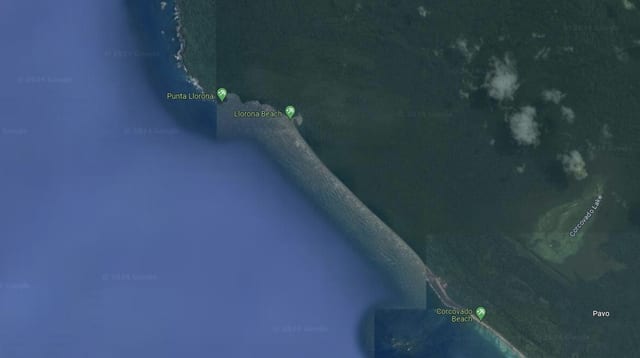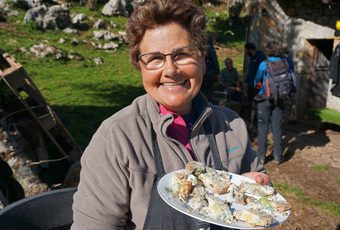Blog
Corcovado vs. Manuel Antonio: A Tale of Two National Parks in Costa Rica
Manuel Antonio vs Corcovado
One of the places we most often come up against overtourism in our destinations is Costa Rica, more particularly Manuel Antonio National Park.
Covering nearly 2,000 hectares of rainforest spread across a headland protruding into the southern Pacific coast, the park is home to 100 or so mammalian & 150+ avian species. It is also full of golden sandy beaches.
You may well have seen the images - a richly forested backdrop to warm lapping waves. Nearby are lots of lovely hotels and places to eat. What's not to love?

Let's get beyond the carefully cropped brochure images to at least give a realistic overview of the area. This is not to say that Manuel Antonio won't be for you but at least it will give you a true understanding of the area.
Firstly, planning regulations in Costa Rica make construction within 200m of the high tide line illegal in non-urban environments. Structures must also be below the tree line. That's why any photo you see of really any part of Costa Rica is going to look more or less the same - pristine! That's Corcovado & Manuel Antonio side by side in the pictures above.
They don't look dissimilar do they? That's because they are within about 120km of one another, as the toucan flies. Broadly speaking, it's the same ecosystem. It's vital to understand what's inside the forest..so let's look more closely....
I've gone onto Google maps and zoomed in to Manuel Antonio to the area where the above photo will have been taken. I've requested hotels to be shown.

I've then stayed at the same level of zoom and scrolled south to approximately where the Corcovado National Park image was taken:

There's now very little equivalence between the two. Zoom in a bit more and you'll see Manuel Antonio's park entrance in detail - where the road dead ends and there's parking and a turning circle for the buses. I've done a quick tally and the hotels you see here have, between them, will have in excess of around 200 rooms.

You get a better sense of it from this promotional shot of the largest of the hotels at the park entrance:

So that's the background to it all - of course by European standards, these are small hotels in a large area with plenty of beach to go round so you may or may not be concerned by any of this. For sure, if you want luxury, you'll have more options around Manuel Antonio than you will around Corcovado. You'll also have lots more choice of pizza restaurants, fried chicken shacks and the like but even so, it's hardly Benidorm.
But if we look at things from the perspective of wildlife then things really start to matter. Manuel Antonio is actually a small island of forest, cut off by the large town above it (beyond all those hotels is Quepos, population 20,000). There's then the Pacific highway which separates the park from the forests of the central mountain range. Heading south, coming out of the national park, you get to palm oil plantations. Huge swathes of monoculture which simply can't sustain biodiversity. This means that the animals, the mammals in particular, are trapped in those 30 square km of national park.
That might sound like a lot of space, but it's not. Take the key species of white faced capuchin monkey. They are smart things with complex, large, social groupings. They require continual renewal of their gene pool as they barrel around. Without a flow of individuals, this doesn't happen.
Additionally, their habits are impacted by proximity to humans. Capuchin monkeys are omnivores by nature - roots, insects, fruit, nuts, all sorts. But in the area around Manuel Antonio, why bother when the hotels have feeding tables out with fruit available nearly year round? And when there are humans to feed you, or at least to be careless enough to leave sweet treats and processed food out for the taking?

With close to 500,000 humans visiting Manuel Antonio each year, that's an awful lot of junk food to tempt the monkeys. The unintended consequence of this is that, when the rainy season hits (October/November) and hotels close, the monkeys are incapable of feeding themselves. Dumpster diving results in all sorts of illness which is dealt with by volunteer vets who have to come along and fix them up.
To be quite clear, I am not saying that this is a situation caused intentionally or that, by visiting Manuel Antonio, you necessarily condone these outcomes. Most monkey-human interactions are initiated by the former - it's monkeys stealing food, not being fed by unthinking tourists. However, it is surprisingly easy to find oneself contributing a fuel to a fire - even in Costa Rica which tends to attract visitors who are very much interested in the joys of nature.

Meanwhile, Corcovado National Park has few of the same pressures. For one thing it covers about 425sqkm and is additionally bordered by substantial buffer zones which behave very much like the national park. It is also connected by a wildlife corridor along the Sierpe River onto the mainland and the Piedras Blancas National Park which runs from the shores of the Golfo Dulce up to the enormous Amistad National Park which continues into Panama. This is not to say that Corcovado doesn't have its challenges but in terms of the freedom of wildlife to do its thing without having to worry about humans, it is effectively a different planet to Manuel Antonio.
Our position is and has been for many years to not send people to Manuel Antonio, ever. When there's a more biodiverse, less fragile/endangered and much less touristed option within touching distance, why would we?

Costa Rica's Month of Wonders
-
$10,000 pp
- 31 days








 By
By 

